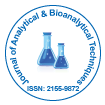Notre groupe organise plus de 3 000 séries de conférences Événements chaque année aux États-Unis, en Europe et en Europe. Asie avec le soutien de 1 000 autres Sociétés scientifiques et publie plus de 700 Open Access Revues qui contiennent plus de 50 000 personnalités éminentes, des scientifiques réputés en tant que membres du comité de rédaction.
Les revues en libre accès gagnent plus de lecteurs et de citations
700 revues et 15 000 000 de lecteurs Chaque revue attire plus de 25 000 lecteurs
Indexé dans
- Indice source CAS (CASSI)
- Index Copernic
- Google Scholar
- Sherpa Roméo
- Base de données des revues académiques
- Ouvrir la porte J
- JournalSeek de génamique
- JournalTOC
- RechercheBible
- Infrastructure nationale du savoir de Chine (CNKI)
- Annuaire des périodiques d'Ulrich
- Bibliothèque de revues électroniques
- Recherche de référence
- Répertoire d’indexation des revues de recherche (DRJI)
- Université Hamdard
- EBSCO AZ
- OCLC-WorldCat
- Direction des chercheurs
- Catalogue en ligne SWB
- Bibliothèque virtuelle de biologie (vifabio)
- Publons
- Euro Pub
- ICMJE
Liens utiles
Revues en libre accès
Partager cette page
Abstrait
Counterfeit Tablet Investigations: Can ATR FT/IR Provide Rapid Targeted Quantitative Analyses?
Graham Lawson, John Ogwu and Sangeeta Tanna
Counterfeit medicines are now a global public health problem. In developed countries up to 1% of medicines are reported to be counterfeit whilst in developing countries the level is ~30-40%. In this research the potential of Attenuated Total Reflection (ATR) FT/IR techniques to provide rapid quantitative analyses of suspect tablet formulations is reported. Unlike conventional tablet analyses where several tablets are crushed and solvent extracted, ATR FT/IR methods require that only a single tablet be crushed prior to analysis. This provides a considerable time saving over the solvent extraction protocols cited in the British Pharmacopoeia. Reference ATR FT/IR spectra of the active pharmaceutical ingredient (API) and excipients, from crushed tablets, were recorded for identification purposes. Quantitative data was obtained from ATR FT/IR spectra of calibrated mixtures of the API in the excipients. Tablet samples from various countries, India, Africa, China, Belgium and the UK were examined. Initial results showed the API could be identified down to ca 5% w/w of the tablet. Quantification was linear with selected characteristic peak areas for each API/excipient mixture. The analysis of the tablet samples generally showed good agreement with expectation. This was confirmed by conventional extractive analyses followed by UV quantification. ATR FT/IR can therefore identify counterfeit tablets rapidly without the need for solvents. Whilst LCMS/ MS and NMR techniques may be the ‘gold standards’ of the analytical world they are of much reduced value in sub-Saharan African countries whereas a portable ATR FT/IR may prevent the use of counterfeit antimalarial tablets and contribute to improvements in patient health.
Revues par sujet
- Agriculture et Aquaculture
- Biochimie
- Chimie
- Food & Nutrition
- Génétique et biologie moléculaire
- Géologie et sciences de la Terre
- Immunologie et microbiologie
- Ingénierie
- La science des matériaux
- Le physique
- Science générale
- Sciences cliniques
- Sciences environnementales
- Sciences médicales
- Sciences pharmaceutiques
- Sciences sociales et politiques
- Sciences vétérinaires
- Soins infirmiers et soins de santé
Revues cliniques et médicales
- Allaitement
- Anesthésiologie
- Biologie moléculaire
- Cardiologie
- Chirurgie
- Dentisterie
- Dermatologie
- Diabète et endocrinologie
- Gastro-entérologie
- Immunologie
- La génétique
- Maladies infectieuses
- Médecine
- Microbiologie
- Neurologie
- Oncologie
- Ophtalmologie
- Pédiatrie
- Recherche clinique
- Soins de santé
- Toxicologie

 English
English  Spanish
Spanish  Chinese
Chinese  Russian
Russian  German
German  Japanese
Japanese  Portuguese
Portuguese  Hindi
Hindi